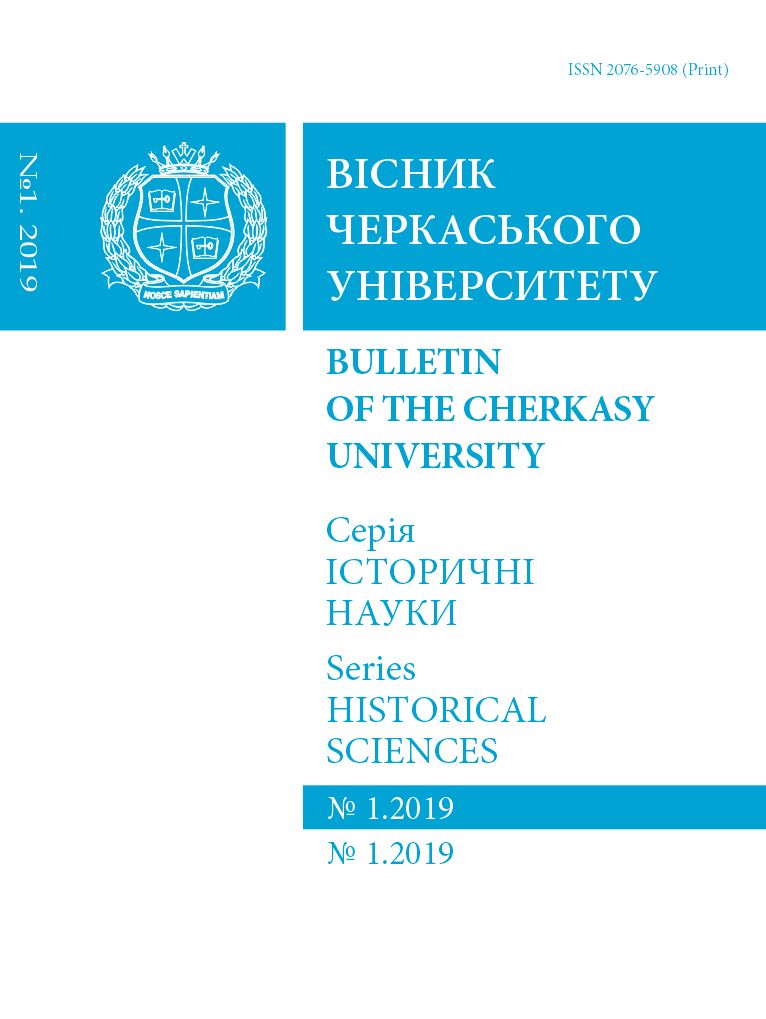Dynamics of oppositional sentiments in the “eastern borderlands” of the Second Polish Republic: features of the development of the Belarusian national liberation movement in the interwar period 1918–1939
Main Article Content
Abstract
Abstract. The purpose of the research is to conduct an in-depth analysis of opposition sentiments in Belarusian society during the interwar period of 1918–1939, focusing on the peculiarities of this region. The research aims to uncover the historical context, identify key figures and organizations that defined opposition trends, and examine significant events and their impact on the formation of the national identity of the Belarusian people. The scientific novelty of the research results lies in expanding the understanding of Belarusian history, especially between the First and Second World Wars. The study is dedicated to a detailed analysis of opposition sentiments and the national liberation movement that emerged during this period. The author seeks to identify key organizations and events that influenced the formation of the national consciousness of the Belarusian people. Conclusions. Researching oppositional sentiments in Belarusian society during the interwar period reveals several key aspects of the country's history. Oppositionality arose in the complex political and socio-cultural environment of the Second Polish Republic, where Belarusian lands became the arena for the struggle for national rights. It is important to note that the national liberation movement was diverse, uniting various political and cultural groups. The involvement of different leaders and organizations defined attempts to establish autonomy and develop Belarusian identity. Cultural revival played a crucial role in shaping national consciousness, but the fight against the Polish administration and assimilation policies posed numerous challenges to the opposition movement. The quest for autonomy for Belarusian lands aimed to alter the political landscape of the region, but its annulment brought about difficulties. Nevertheless, oppositional sentiments determined the fate of national revival, playing a significant role in the subsequent development of Belarusian society.
Article Details
References
References
Kurza, K. (2020) Unification of Discourses in a Nation-Building State: Ruling Groups towards the Belarusian Population in the Second Polish Republic. Studia z Dziejów Rosji i Europy Środkowo-Wschodniej [Studies in the History of Russia and Central and Eastern Europe], 67–93 [in Polish].
Wapiński, R. (1994) Poland and Its Inhabitants in Social Imaginations after Independence Restoration (up to 1939). Komunikaty Mazursko-Warmińskie [Masurian-Warmian Statements], 2–3, 271–279 [in Polish].
Massis, E. (2015) Attempts to Form National Identity among the Slavic Population in the Polesie Region in the First Years of the Second Polish Republic (1920–1928). Adeptus, 5, 1–18 [in Polish].
Olstowski, P. (2020) Separatism, Regionalism, and Unification in the Second Polish Republic (1918–1939). Issues of State and Society Integration after Independence Restoration. Issues of State and Society Integration after Independence Restoration. Wydawnictwo Uniwersytetu Jagiellońskiego [Jagiellonian University Publishing House], 733–743 [Іn Polish].
Kirwiel, E. (2006) Characteristics of the North-Eastern Borderlands of the Second Polish Republic in the Interwar Period. Annales Universitatis Mariae Curie-Skłodowska [Annales University Mariae Sklodowska–Curie], Politologia, 93–105 [in Polish].
Kirwiel, E. (2017) The Political Life of the Jewish Minority in the North-Eastern Borderlands of the Second Polish Republic during the Interwar Period. Zarys problematyki Wschód Europy. [Outline of the problem of Eastern Europe], 3, 121–136 [in Polish].
Podgajna, E. (2021) Slavic National Minorities in the Political Thought of the People’s Movement during the Interwar Period in Eastern Europe. Wschód Europy [Eastern Europe], 7 (1), 191–210 [in Polish].
Paprocka, W. (1999) Belarusian Public and Cultural Organizations on the Eastern Borderlands in the Second Polish Republic. Etnografia polska [Polish ethnography], XLIII: 1–2, 51–72 [in Polish].
Paprocka, W. (1995) Belarussian population and Polish minority policy in the interwar period. Etnografia Polska [Polish ethnography], 1–2, 5–32 [in Polish].
Mironovich, E. (2010) The Formation of the Belarusian State: From the People's Republic to the Soviet Republic. URL: https://repozytorium.uwb.edu.pl/jspui/bitstream/11320/12979/1/E_Mironowicz_Powstanie_panstwa_bialoruskiego.pdf [in Ukrainian].
Horab, Y. (2013) Political Parties and Organizations of Belarusians in the Second Polish Republic (1918–1926). Hileia, 72, 212–217 [in Ukrainian].
Stuzhynska, N. (2012) Belarus rebelious: from the history of armed anti-soviet resistance in the 1920s URL: https://shron1.chtyvo.org.ua/Stuzhynska_Nina [in Ukrainian].
Gomolk, K. (1998) Belarusian Cultural and Educational Institutions in the Second Polish Republic. Białoruskie Zeszyty Historyczne [Belarusian Historical Notebooks], 9, 140–148 [in Polish].

